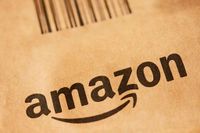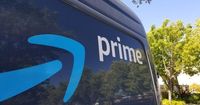Amazon Prime members have long enjoyed the convenience of fast, free shipping—a perk that many say keeps them loyal to the retail giant. But starting October 1, 2025, a significant change is coming: Amazon will officially end its Prime Invitee program, which allowed members to share free shipping benefits with friends and family outside their household. The move, announced in a series of notices to customers and reported by ABC News, CNBC, CBS News, and Kiplinger, signals a new era for how Amazon manages its most popular membership benefit.
For years, the Prime Invitee program let subscribers extend their delivery perks to people who didn’t live at the same address. Launched in the U.S. in 2009, the program initially helped Amazon grow its Prime user base by giving members the option to invite others—often friends, distant relatives, or even roommates living elsewhere—to enjoy the same speedy shipping without paying for their own membership. However, as CBS News notes, Amazon stopped accepting new guests into the program back in 2015, though existing invitees continued to benefit.
Now, that chapter is closing. According to Amazon’s official statement to ABC News, “The Invitee Program, which enabled sharing of the Prime shipping benefit only, is being phased out.” The company has begun notifying users by email, with a clear message: “We are writing to inform you that the Prime Invitee Program, which allowed sharing Prime’s fast, free delivery with others, will end on October 1, 2025. Your invited guests will be notified directly about this change by September 5, 2025.”
What’s replacing the Invitee program? Enter Amazon Family—a revamped sharing model that’s far more restrictive but, Amazon argues, more secure and tailored to modern households. Under the new system, Prime members can share a broad range of benefits with one other adult in their household (be it a spouse, family member, or roommate at the same address) and up to four children. The perks go beyond shipping, encompassing deals, Prime Day shopping events, Prime Video, Amazon Music, a free Grubhub+ membership, and fuel savings at Amoco and over 7,500 participating locations, as detailed by CNBC and Kiplinger.
For families with teens, there’s a small window of opportunity: up to four teenagers can share in Prime benefits, but only if their accounts were created before April 7, 2025, when the Teen Login program stopped accepting new signups. This detail, reported by CNBC, means that new households hoping to add teens after that date are out of luck.
There’s a catch, though. All Amazon Family members must live at the same primary address and share the same payment method, a requirement Amazon says helps verify household membership. This effectively ends the workaround many used to split the cost of Prime with friends or relatives living across town—or across the country. As Kiplinger points out, “Since Amazon Family requires all family members to live at the same primary address, it may not be a solution for Invitee program users who live at different addresses.”
For those losing their free ride, Amazon is offering a consolation prize: a discounted Prime membership at just $14.99 for the first year. This offer is available to affected users starting September 5, 2025, and runs through December 31, 2025. After the first year, the standard rates kick in—$14.99 per month or $139 annually, as confirmed by CBS News and Kiplinger. Amazon last raised its Prime fee in 2022, bumping it from $119 to the current $139 per year.
The timing of the change is notable. According to Reuters, Amazon’s U.S. Prime signups during a recent four-day push in July and the 21-day runup to Prime Day fell short of company targets and lagged behind last year’s numbers. Yet, Amazon maintains that “Prime membership continues to show strong growth and customer engagement in the U.S. and internationally.” A spokesperson told CNBC, “We continue to see robust adoption globally as we enhance the Prime value proposition through faster delivery speeds, expanded entertainment offerings, and additional shopping benefits.”
Amazon’s crackdown mirrors a broader trend in the subscription economy. Other giants, such as Netflix, have also tightened policies around password sharing to encourage more people to pay for their own subscriptions. The logic is simple: by limiting sharing, companies hope to convert freeloaders into paying customers, boosting revenue at a time when growth is harder to come by.
Still, Amazon isn’t leaving budget-conscious shoppers entirely out in the cold. The company offers several ways to save on Prime. The Amazon Prime Access program provides a 50% discount to eligible low-income households enrolled in programs like SNAP or Medicaid. Students and young adults aged 18 to 24 can enjoy free trials and discounted memberships through Amazon Prime for Young Adults. And for those who simply want to avoid shipping fees, any order of $35 or more fulfilled by Amazon qualifies for free shipping—no Prime membership required. As Kiplinger advises, planning ahead and bundling purchases can help shoppers reach that threshold without paying for Prime.
Meanwhile, Amazon is investing heavily in expanding its delivery network, aiming to bring faster service to 1,000 smaller cities, towns, and rural communities across the U.S. by the end of the year. This expansion, highlighted by CBS News, is part of Amazon’s broader strategy to maintain its edge in logistics and keep customers coming back, even as competition from big-box retailers and online upstarts intensifies.
For Prime members, the end of the Invitee program marks the close of an era. The days of sharing free shipping with far-flung friends or distant relatives are numbered. Going forward, Amazon’s message is clear: Prime benefits are for your household—and if you want them, you’ll need to pay your own way. As the company puts it, “Prime members can instead share a broad range of Prime benefits with Amazon Family.”
For some, the new restrictions may sting—a reminder that convenience comes at a cost. For others, the expanded entertainment and shopping perks of Amazon Family might soften the blow. Either way, the retail giant is betting that its suite of benefits, from lightning-fast delivery to exclusive streaming content, will keep Prime memberships—and revenue—on the rise.





